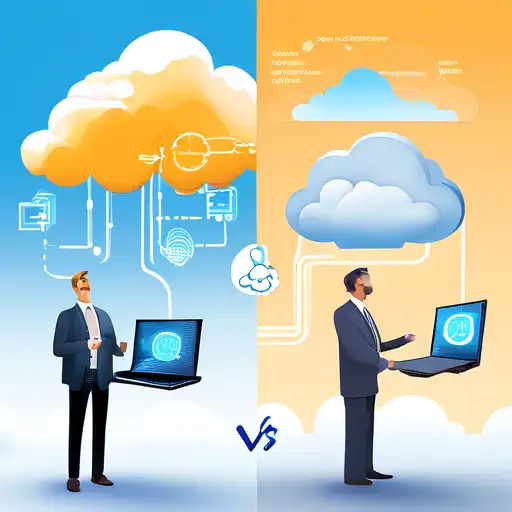Introduction to Edge and Cloud Computing
In the rapidly evolving world of technology, understanding the differences between edge computing and cloud computing is crucial for businesses and individuals alike. Both technologies play pivotal roles in data processing and storage, but they cater to different needs and scenarios.
What is Cloud Computing?
Cloud computing refers to the delivery of computing services—including servers, storage, databases, networking, software, analytics, and intelligence—over the Internet ('the cloud') to offer faster innovation, flexible resources, and economies of scale. Users typically pay only for the cloud services they use, helping lower operating costs, run infrastructure more efficiently, and scale as their business needs change.
What is Edge Computing?
Edge computing, on the other hand, is a distributed computing paradigm that brings computation and data storage closer to the location where it is needed to improve response times and save bandwidth. The goal of edge computing is to process data near the edge of your network, where the data is being generated, instead of in a centralized data-processing warehouse.
Key Differences Between Edge and Cloud Computing
While both edge and cloud computing are used to process data, they differ significantly in several aspects:
- Location of Data Processing: Cloud computing processes data in centralized data centers, whereas edge computing processes data locally or near the source of data generation.
- Latency: Edge computing significantly reduces latency by processing data closer to the source, making it ideal for real-time applications. Cloud computing, due to its centralized nature, may introduce delays.
- Bandwidth Usage: Edge computing minimizes bandwidth usage by processing data locally, reducing the need to send vast amounts of data to the cloud. This is particularly beneficial in areas with limited connectivity.
- Security: Edge computing can offer enhanced security by keeping sensitive data within the local network, reducing exposure to potential breaches during transmission to the cloud.
Choosing Between Edge and Cloud Computing
The choice between edge and cloud computing depends on the specific needs of a business or application. For applications requiring real-time processing and low latency, edge computing is the preferred choice. Conversely, for applications that require vast storage and computing power without the need for immediate processing, cloud computing is more suitable.
Future Trends
As technology continues to advance, the line between edge and cloud computing is expected to blur, with hybrid models becoming more prevalent. These models will leverage the strengths of both computing paradigms to offer more flexible and efficient solutions.
Understanding the differences between edge and cloud computing is essential for making informed decisions about which technology to adopt for specific applications. By considering factors such as latency, bandwidth, and security, businesses can choose the most appropriate computing model to meet their needs.
